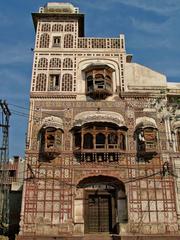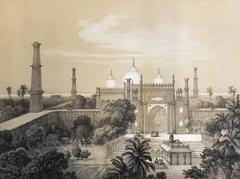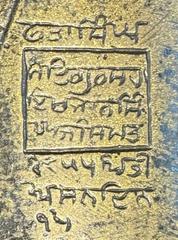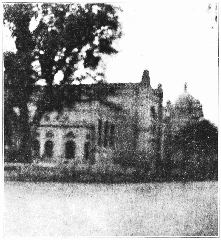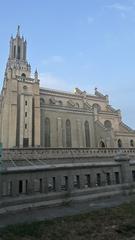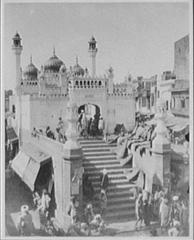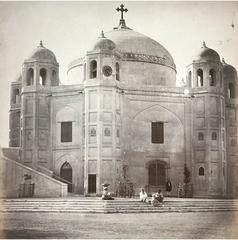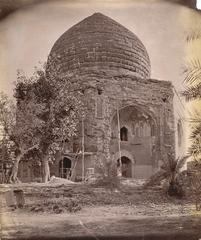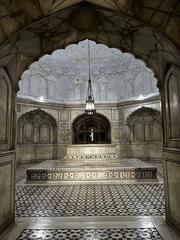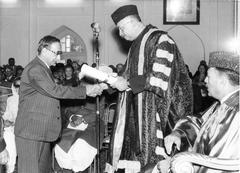Comprehensive Guide to Visiting Wazir Khan Mosque, Lahore, Pakistan
Date: 17/07/2024
Introduction
The Wazir Khan Mosque, located in the heart of Lahore, Pakistan, is an architectural masterpiece and a testament to the grandeur of Mughal art and construction. Commissioned by Hakim Ilm-ud-din Ansari, known as Wazir Khan, during the reign of Emperor Shah Jahan, this mosque was constructed between 1634 and 1641 AD (Dawn). Known for its exquisite tile work, or kashi kari, and intricate frescoes, the mosque stands as a symbol of the fusion of Islamic, Persian, and Indian architectural styles, reflecting the cultural amalgamation that characterized the Mughal Empire (Archnet). Beyond its architectural beauty, the Wazir Khan Mosque has served as a center for learning, community gatherings, and religious importance for centuries, strategically located along the historic Royal Road connecting Lahore Fort to Delhi Gate (The Friday Times). Today, it continues to be a vital part of Lahore’s cultural and religious landscape, attracting tourists, historians, and architects from around the globe (Pakistan Tourism Development Corporation). This comprehensive guide aims to provide visitors with detailed information about the mosque’s history, architectural significance, visitor tips, and more.
Table of Contents
History of مسجد وزیر خان (Wazir Khan Mosque)
Foundation and Construction
The Wazir Khan Mosque, located in Lahore, Pakistan, is a masterpiece of Mughal architecture. It was commissioned by Hakim Ilm-ud-din Ansari, known as Wazir Khan, who was the governor of Lahore under the reign of Emperor Shah Jahan. The construction of the mosque began in 1634 AD and was completed in 1641 AD. The mosque was built over a period of seven years, reflecting the grandeur and meticulous craftsmanship characteristic of the Mughal era (Dawn).
Architectural Significance
The mosque is renowned for its intricate tile work, known as kashi kari, which is a hallmark of Mughal architecture. The tiles are adorned with floral patterns, calligraphy, and geometric designs, showcasing the artistic excellence of the period. The mosque’s layout follows the traditional Persian-style courtyard mosque, featuring a large central courtyard surrounded by prayer halls on all sides. The main prayer hall is topped with a large dome, flanked by four smaller domes, and the mosque is further accentuated by its towering minarets at each corner (Archnet).
Historical Context
The construction of the Wazir Khan Mosque took place during a period of significant architectural and cultural development in the Mughal Empire. Shah Jahan, known for his patronage of the arts, commissioned several monumental structures, including the Taj Mahal. The mosque served not only as a place of worship but also as a center for learning and community gatherings. It was strategically located along the Royal Road, which connected the Lahore Fort to the Delhi Gate, making it a prominent landmark for travelers and traders (The Friday Times).
Cultural and Religious Importance
The Wazir Khan Mosque holds immense cultural and religious significance. It has been a focal point for the Muslim community in Lahore for centuries. The mosque’s design incorporates elements of Islamic, Persian, and Indian architectural styles, symbolizing the cultural amalgamation that characterized the Mughal Empire. The mosque’s extensive use of calligraphy, featuring verses from the Quran, highlights its religious importance and serves as a testament to the Islamic art of the period (UNESCO).
Preservation and Restoration
Over the centuries, the Wazir Khan Mosque has faced challenges related to preservation and restoration. The mosque’s intricate tile work and frescoes have suffered from environmental damage and neglect. However, several restoration efforts have been undertaken to preserve this historical gem. In recent years, the Aga Khan Trust for Culture, in collaboration with the Government of Punjab, has led significant restoration projects to conserve the mosque’s architectural integrity and restore its original splendor (Aga Khan Development Network).
Modern-Day Relevance
Today, the Wazir Khan Mosque continues to be a vital part of Lahore’s cultural and religious landscape. It attracts tourists, historians, and architects from around the world who come to admire its beauty and historical significance. The mosque also remains an active place of worship, hosting daily prayers and religious gatherings. Its enduring legacy is a testament to the rich cultural heritage of Lahore and the Mughal Empire’s architectural prowess (Pakistan Tourism Development Corporation).
Visitor Information
- Visiting Hours: The Wazir Khan Mosque is open to visitors from 8:00 AM to 8:00 PM daily.
- Tickets: Entry to the mosque is free, but donations are welcome for maintenance and restoration efforts.
- Best Time to Visit: The mosque is open to visitors throughout the year, but the best time to visit is during the cooler months from October to March.
- Dress Code: Visitors are advised to dress modestly, covering their heads and removing their shoes before entering the mosque.
- Guided Tours: Hiring a local guide can enhance the experience, providing deeper insights into the mosque’s history and architectural features.
- Photography: Photography is allowed, but visitors should be respectful and avoid disrupting worshippers.
Key Features and Highlights
- Entrance and Courtyard: The mosque’s entrance is marked by a grand gateway, leading to a spacious courtyard. The courtyard is surrounded by arcades and features a central ablution pool, which is used for ritual purification before prayers.
- Prayer Hall: The main prayer hall is adorned with intricate frescoes and tile work. The mihrab (prayer niche) and minbar (pulpit) are exquisitely decorated, reflecting the mosque’s religious significance.
- Minarets: The mosque’s four minarets, each standing at approximately 107 feet, are a prominent feature. They offer a panoramic view of the surrounding area and are a testament to the mosque’s architectural grandeur.
- Calligraphy and Frescoes: The mosque’s walls and ceilings are adorned with calligraphy and frescoes depicting floral and geometric patterns. These artistic elements are a highlight for visitors and scholars alike (Lahore Heritage Club).
Travel Tips
- Nearby Attractions: Don’t miss visiting nearby historical sites such as the Lahore Fort, Badshahi Mosque, and Shalimar Gardens.
- Local Cuisine: Explore the local cuisine in the nearby food streets like Gawalmandi and Fort Road Food Street.
- Transport: The mosque is easily accessible by taxi, rickshaw, or public transport. It is located near the Delhi Gate in the Walled City of Lahore.
Frequently Asked Questions (FAQs)
Q: What are the opening hours of the Wazir Khan Mosque?
A: The mosque is open daily from 8:00 AM to 8:00 PM.
Q: Is there an entry fee for the Wazir Khan Mosque?
A: Entry to the mosque is free, but donations are appreciated.
Q: Can I take photos inside the mosque?
A: Yes, photography is allowed, but please be respectful and avoid disturbing worshippers.
Conclusion
The Wazir Khan Mosque stands as a beacon of Lahore’s rich historical and cultural heritage. Its architectural brilliance and historical significance make it a must-visit destination for anyone exploring the vibrant city of Lahore. Over the centuries, despite facing challenges related to preservation, significant restoration efforts have helped retain its original splendor (Aga Khan Development Network). Today, it remains an active place of worship and a symbol of the Mughal Empire’s architectural prowess. Visitors are encouraged to explore not only the mosque but also the surrounding historical sites, such as Lahore Fort, Badshahi Mosque, and Shalimar Gardens, to fully immerse themselves in the rich cultural tapestry of Lahore. For a more enriching experience, consider hiring a local guide, and don’t miss the local cuisine and crafts in the nearby bazaars (Lahore Heritage Club). Whether you are a history enthusiast, an architecture lover, or a curious traveler, the Wazir Khan Mosque promises an unforgettable journey through time. For more information and updates, visit the official website of the Walled City of Lahore Authority.
References
- Dawn, 2018, ‘The Wazir Khan Mosque: A Masterpiece of Mughal Architecture’ dawn.com
- Archnet, n.d., ‘Wazir Khan Mosque’ archnet.org
- The Friday Times, 2021, ‘The Wazir Khan Mosque: A Masterpiece of Mughal Architecture’ thefridaytimes.com
- UNESCO, n.d., ‘Wazir Khan Mosque’ whc.unesco.org
- Aga Khan Development Network, n.d., ‘Wazir Khan Mosque’ akdn.org
- Pakistan Tourism Development Corporation, n.d., ‘Wazir Khan Mosque’ tourism.gov.pk
- Lahore Heritage Club, n.d., ‘Wazir Khan Mosque’ lahoreheritageclub.com
